
CBSE and RBSE Class 10 Social Science: Understanding Nationalism in Europe Through NCERT Textbook Insights
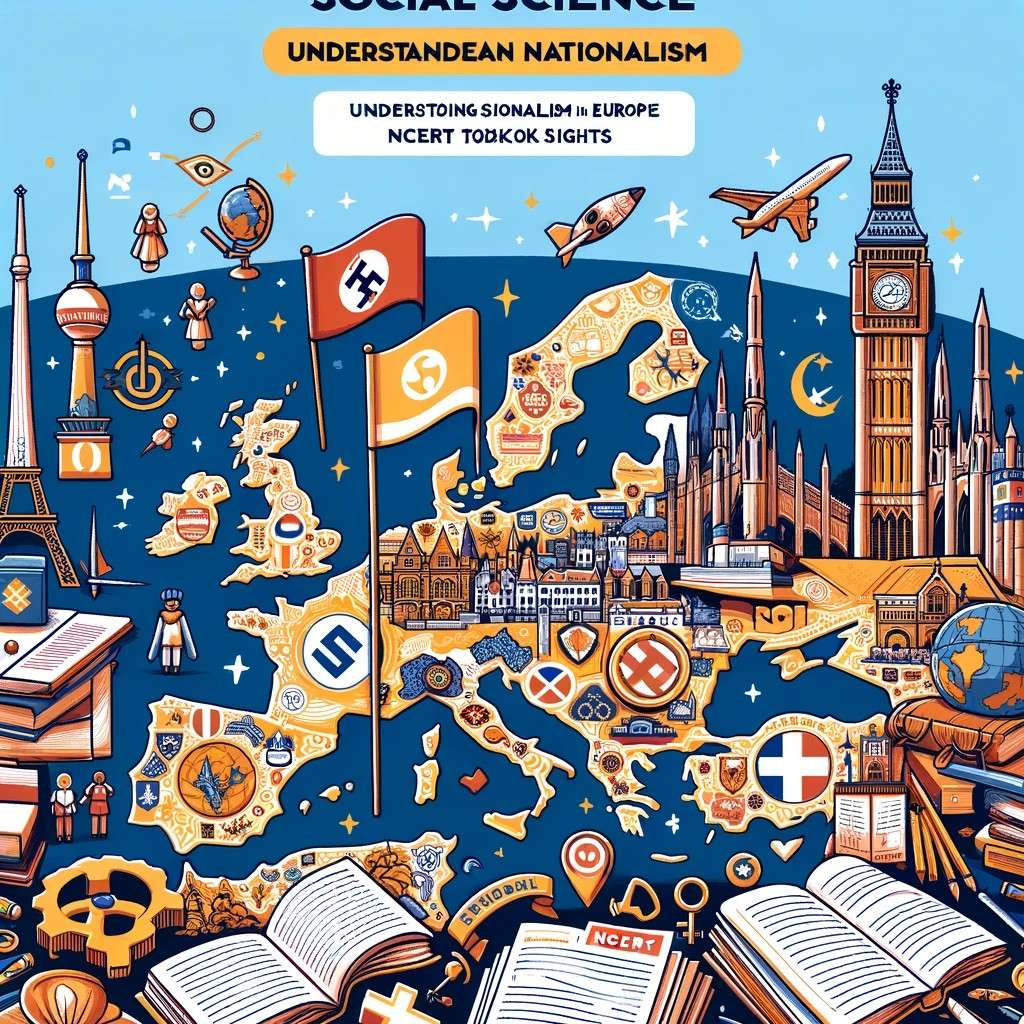
“The Rise of Nationalism in Europe,” a chapter from the Class 10 Social Science
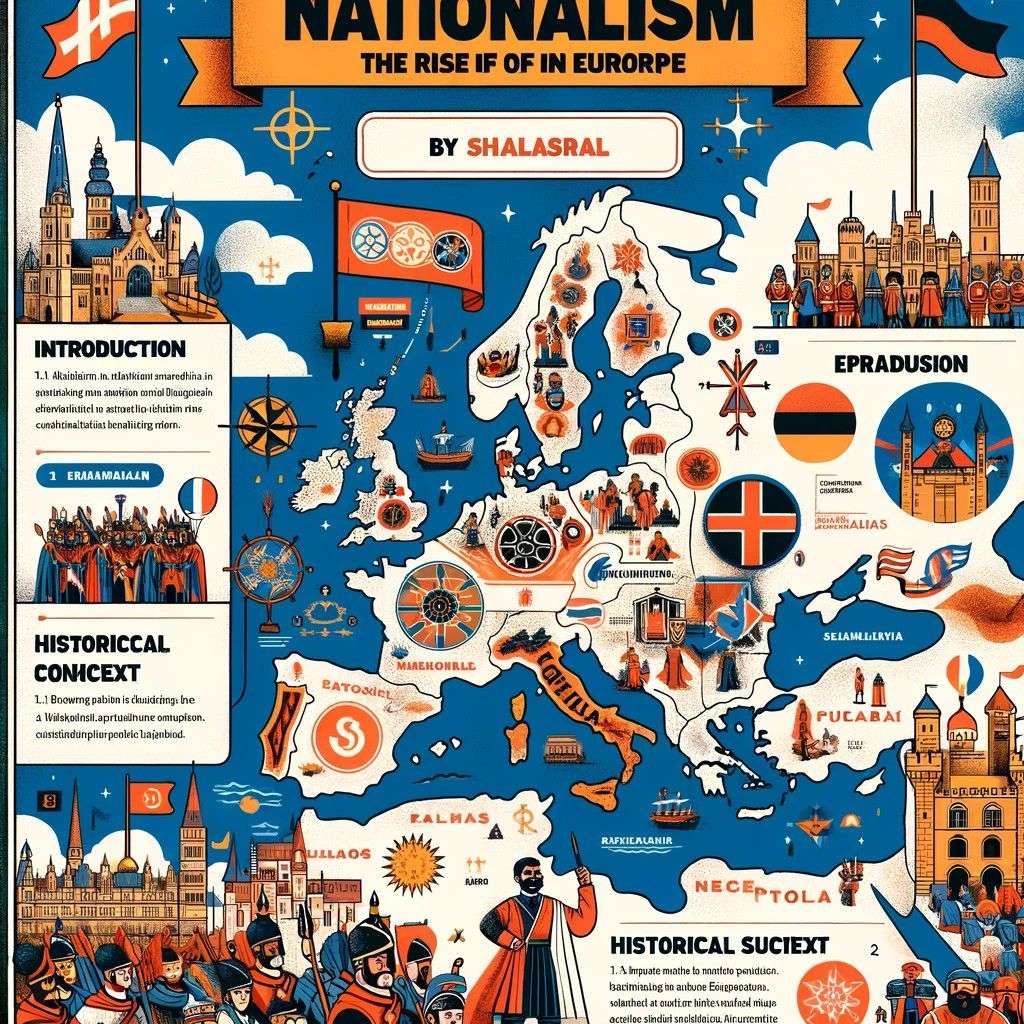
- Definition and Concept of Nationalism:
- Nationalism is a political ideology that emerged in the late 18th and early 19th centuries. It is centered around the belief that people who share a common language, history, and culture should constitute an independent nation, free of foreign domination.
- It emphasizes loyalty and devotion to the nation, often placing the nation’s interests above regional or individual interests.
- Nationalism is characterized by a sense of common identity among members of a nation and often includes the belief that the nation has a unique mission.
- Historical Context of Europe pre-Nationalism:
- Before the rise of nationalism, Europe was divided into numerous kingdoms, duchies, and empires with complex and often overlapping allegiances and territories.
- The society was predominantly feudal, with power held by a class of aristocrats and monarchs who ruled over largely agrarian populations.
- The political boundaries of Europe were not necessarily aligned with ethnic or linguistic lines. Many regions were multicultural, and loyalties were more often to local lords or monarchs rather than to a nation.
- The idea of a unified nation-state based on ethnic, cultural, or linguistic similarity was not the norm.
- The religious identity also played a significant role, with the Catholic Church being a major political as well as a religious force.
In summary, this introduction sets the stage for understanding how the complex and varied political landscape of pre-nationalist Europe transformed into nation-states driven by the ideology of nationalism. This transformation was significantly influenced by events like the French Revolution, which propagated ideas of liberty, fraternity, and equality, serving as a catalyst for nationalist movements across Europe.
The French Revolution and the Idea of the Nation
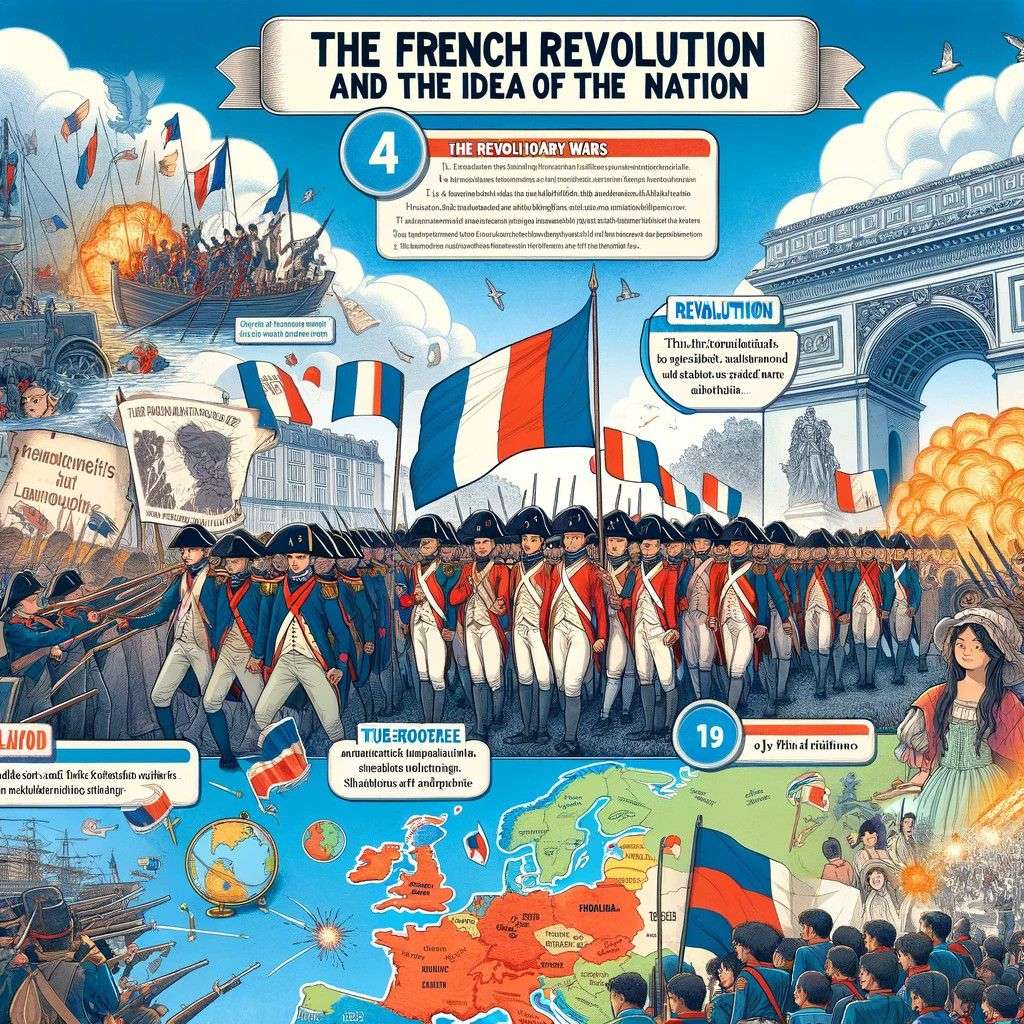
- Impact of the French Revolution on Europe:
- The French Revolution, which began in 1789, radically transformed France from a monarchy to a republic. The key principles of the revolution were ‘Liberty, Equality, and Fraternity.’
- These principles challenged the existing monarchical and feudal structures across Europe, inspiring people to question the legitimacy of their rulers and the social hierarchies.
- The revolution popularized the idea that sovereignty did not belong to the monarchy but to the people, a concept that fundamentally altered the political landscape of Europe.
- The abolition of privileges based on birth, the establishment of a constitution, and the emphasis on individual rights were revolutionary ideas that spread across Europe, igniting demands for democratic reforms.
- The Revolutionary Wars and the Spread of Nationalistic Ideas:
- Following the revolution, France found itself at war with various monarchies in Europe, leading to a series of conflicts known as the Revolutionary Wars.
- These wars were not just battles over territory but were seen as a fight between the revolutionary forces of democracy and the old monarchical order.
- The French armies carried the ideas of the revolution beyond France, especially the notions of constitutional government and national self-determination.
- This led to the rise of nationalistic feelings among the populations in other parts of Europe, as people began to identify themselves as part of a nation.
- The Role of the French Revolutionary Army:
- The French Revolutionary Army played a crucial role in spreading nationalist ideas. Conscription was introduced, which called upon all citizens to defend the nation. This was a significant departure from the traditional armies that were often composed of mercenaries.
- The army was seen as a people’s army, fighting for the ideals of the revolution, which was a powerful narrative that resonated with many across Europe.
- As the army moved through Europe, it not only fought wars but also spread the ideas of nationalism and democracy, leading to an awakening of national identities among various European populations.
In summary, the French Revolution was pivotal in the rise of nationalism in Europe. It altered traditional power structures, introduced new political ideas, and inspired people across the continent to conceive of a nation-state as a community of equals, united by common goals and cultural ties.
The Age of Revolutions: 1830-1848
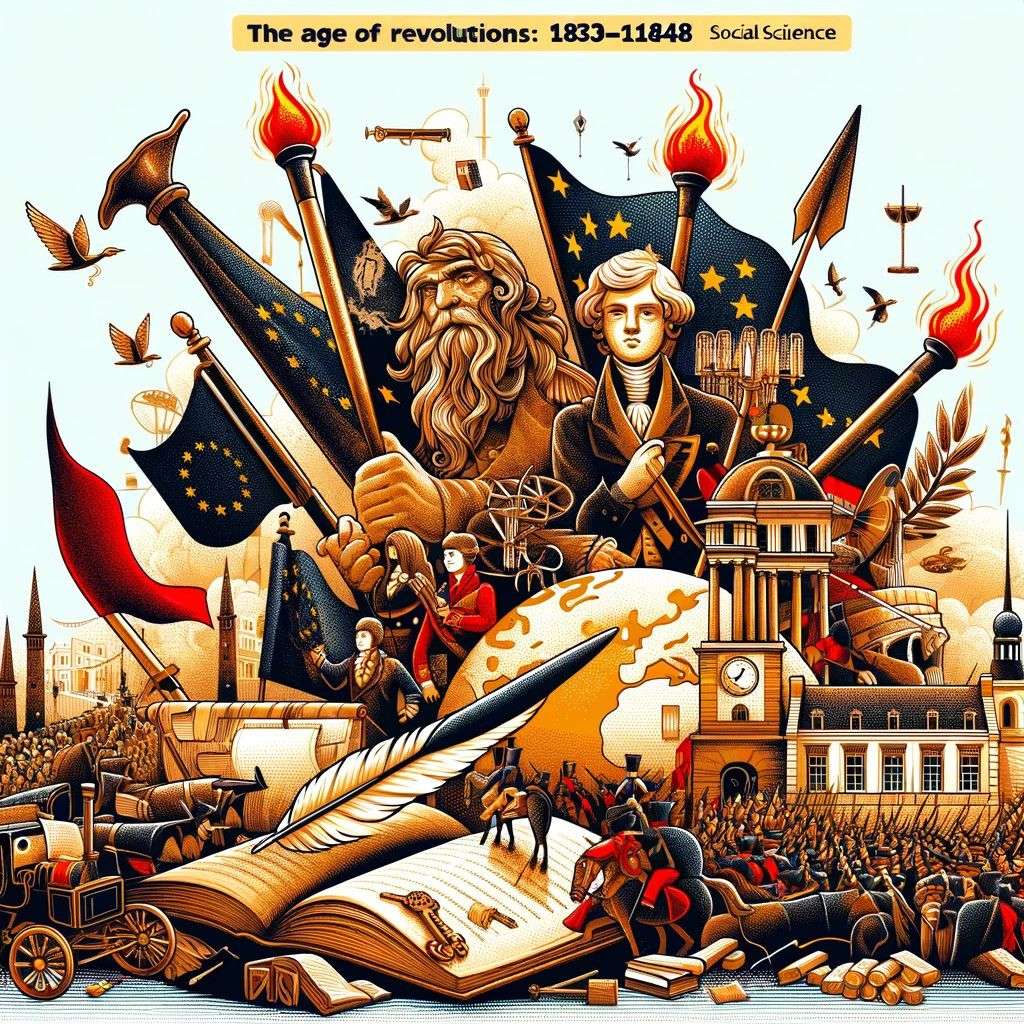
“The Age of Revolutions: 1830-1848” is a pivotal chapter in European history, marked by a series of uprisings and revolutions across the continent. This period is critical in understanding the development of modern nation-states and the spread of nationalism. Let’s delve into a detailed explanation of the key aspects of this era:
- A Series of Revolutions across Europe:
- Following the Congress of Vienna in 1815, a relative peace had been maintained in Europe, but it was underlain by growing discontent among the populace in various regions.
- The July Revolution of 1830 in France was a significant spark that ignited a series of uprisings. King Charles X of France was overthrown, and Louis-Philippe was placed on the throne, signaling the shift from a monarchy to a constitutional monarchy.
- Inspired by the events in France, nationalist movements gained momentum in other parts of Europe. Belgium broke away from the United Kingdom of the Netherlands, establishing its independence.
- In the Italian states, a wave of revolt began, especially in the kingdoms of Sardinia and the Two Sicilies. Although these revolts were largely unsuccessful in achieving long-term nationalist goals, they sowed the seeds for future unification movements.
- Poland attempted to throw off Russian dominance in the November Uprising of 1830, although it was eventually crushed by Russian forces.
- These revolutions were not just political but also had significant social undertones. They represented a growing dissatisfaction with the conservative order imposed by the Congress of Vienna and a desire for more liberal and nationalistic governments.
- The Romantic Imagination and National Feeling:
- This era was heavily influenced by the Romantic movement in art and literature, which emphasized emotion, individualism, and glorification of the past and nature.
- Romanticism played a crucial role in developing national feelings. It idealized folklore, local history, and the natural landscape, which became sources of national pride and identity.
- The works of writers and poets like Johann Wolfgang von Goethe in Germany and Lord Byron in Britain captured the imagination of the public and inspired nationalist sentiments.
- Music also contributed to this national awakening, with composers such as Richard Wagner in Germany and Frédéric Chopin in Poland infusing their music with national themes.
- Key Figures and Events:
- Key figures during this period were not just political leaders but also intellectuals, artists, and writers who contributed to the nationalist cause.
- In France, Louis-Philippe’s reign, known as the July Monarchy, was marked by a liberal spirit but also by social unrest and opposition from republicans and Bonapartists.
- Giuseppe Mazzini in Italy emerged as an important nationalist leader and a proponent of the unification of Italy. He founded the Young Italy movement, aiming to transform Italy into a sovereign, democratic republic.
- The 1848 Revolutions, also known as the Spring of Nations, were a series of political upheavals throughout Europe. It was the first instance of widespread revolutionary movement across the continent, with significant events occurring in France, the German states, the Italian states, and the Austrian Empire.
- The February Revolution in France in 1848 led to the abdication of Louis-Philippe and the establishment of the French Second Republic.
- In the German states, a series of uprisings led to the Frankfurt Assembly’s convening, aiming to unify the German states under a liberal constitution.
In conclusion, “The Age of Revolutions: 1830-1848” was a period of significant change and upheaval in Europe. It was marked by a series of revolutions that not only altered the political landscape but also fostered a sense of national identity and unity among the people. This period laid the groundwork for the future formation of nation-states and significantly contributed to the narrative of modern nationalism.
The Making of Nationalism in Europe
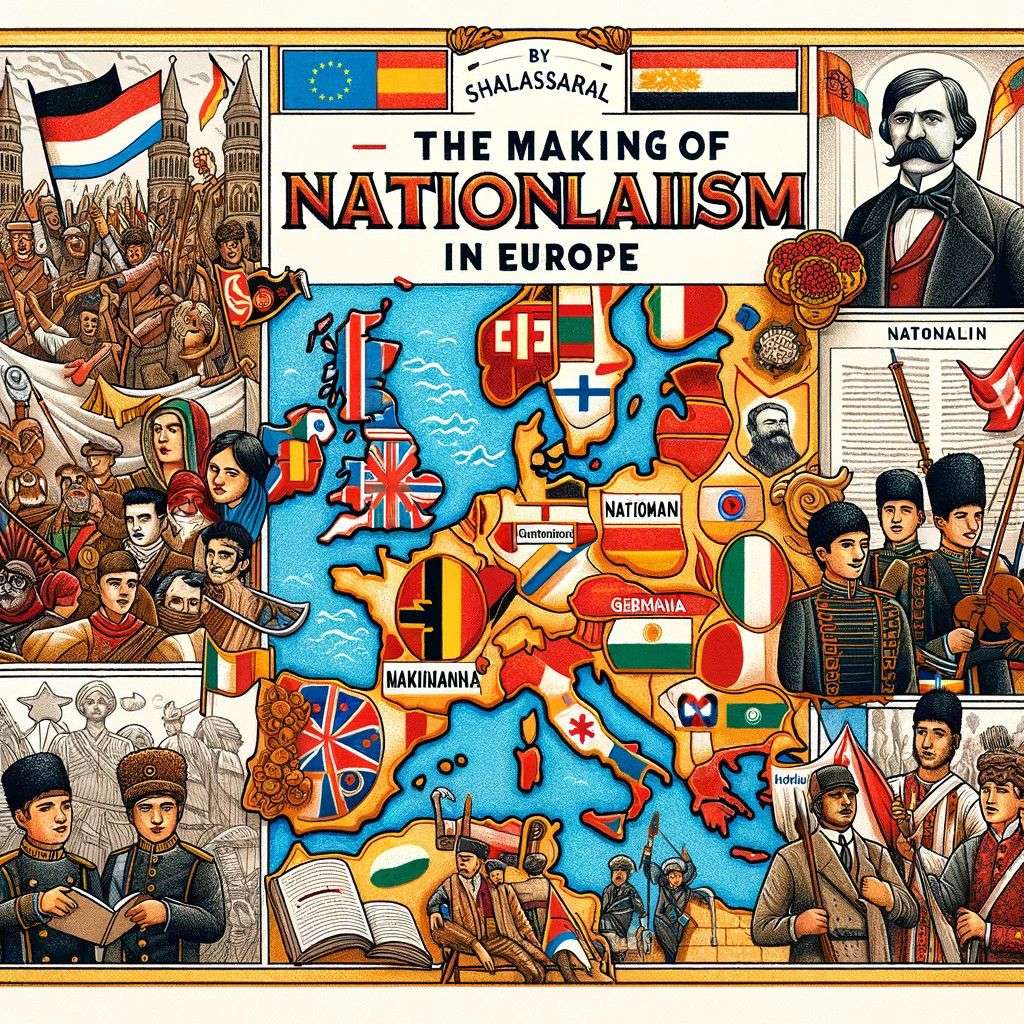
“The Making of Nationalism in Europe” is a significant chapter in European history, particularly in understanding how nationalism shaped the continent’s modern political landscape. Here’s a detailed explanation of the key components of this theme:
- Role of Culture in Shaping Nationalism:
- Language, History, and Culture as National Symbols:
- Nationalism in Europe was heavily influenced by cultural factors. Language played a crucial role; it was not just a means of communication but also a symbol of identity. Vernacular languages, often suppressed under imperial rule, became a rallying point for nationalist movements.
- Historical narratives were crafted to promote a sense of pride and common heritage. Myths, folklore, and legends were often revisited or even reinvented to highlight a glorious past and a common ancestry, thereby fostering a shared national identity.
- Cultural elements like music, literature, and art became tools of nationalist expression. Composers like Chopin for Poland and Verdi for Italy used music to evoke national pride. Similarly, writers and poets used local languages and themes to express nationalist sentiments.
- Symbols like flags, anthems, and national heroes were used to instill a sense of unity and common purpose among diverse populations.
- Case Studies: Different Parts of Europe:
- Germany:
- The unification of Germany is a prime example of nationalism driven by cultural unity. Prior to unification, what we now know as Germany was a collection of disparate states. The shared language and cultural heritage played a significant role in the movement towards unification.
- Figures like Johann Gottfried Herder celebrated the German Volk (people) and their Volkgeist (national spirit). The Brothers Grimm collected German fairy tales, showcasing the uniqueness of the German language and culture.
- The culmination of these nationalist sentiments was the unification of Germany in 1871 under the Prussian king, Wilhelm I, largely engineered by Otto von Bismarck.
- Italy:
- Like Germany, Italy was divided into multiple states. The movement for Italian unification, known as the Risorgimento, was fueled by a shared sense of Italian culture and history.
- Cultural leaders like Alessandro Manzoni, who wrote in the Tuscan dialect (which later became the basis for the Italian language), played a vital role.
- The unification of Italy was achieved through the efforts of figures like Giuseppe Garibaldi and Count Camillo di Cavour, culminating in the establishment of the Kingdom of Italy in 1861.
- Poland:
- Poland’s situation was unique as it was partitioned at the end of the 18th century by Russia, Prussia, and Austria, losing its independence.
- Nationalism in Poland was characterized by the struggle to preserve its culture and language. Polish literature and music, epitomized by figures like Adam Mickiewicz and Frédéric Chopin, kept the Polish spirit alive.
- Despite not achieving statehood until after World War I, Polish nationalism remained strong due to these conditions.
The Nation-State and its Symbols
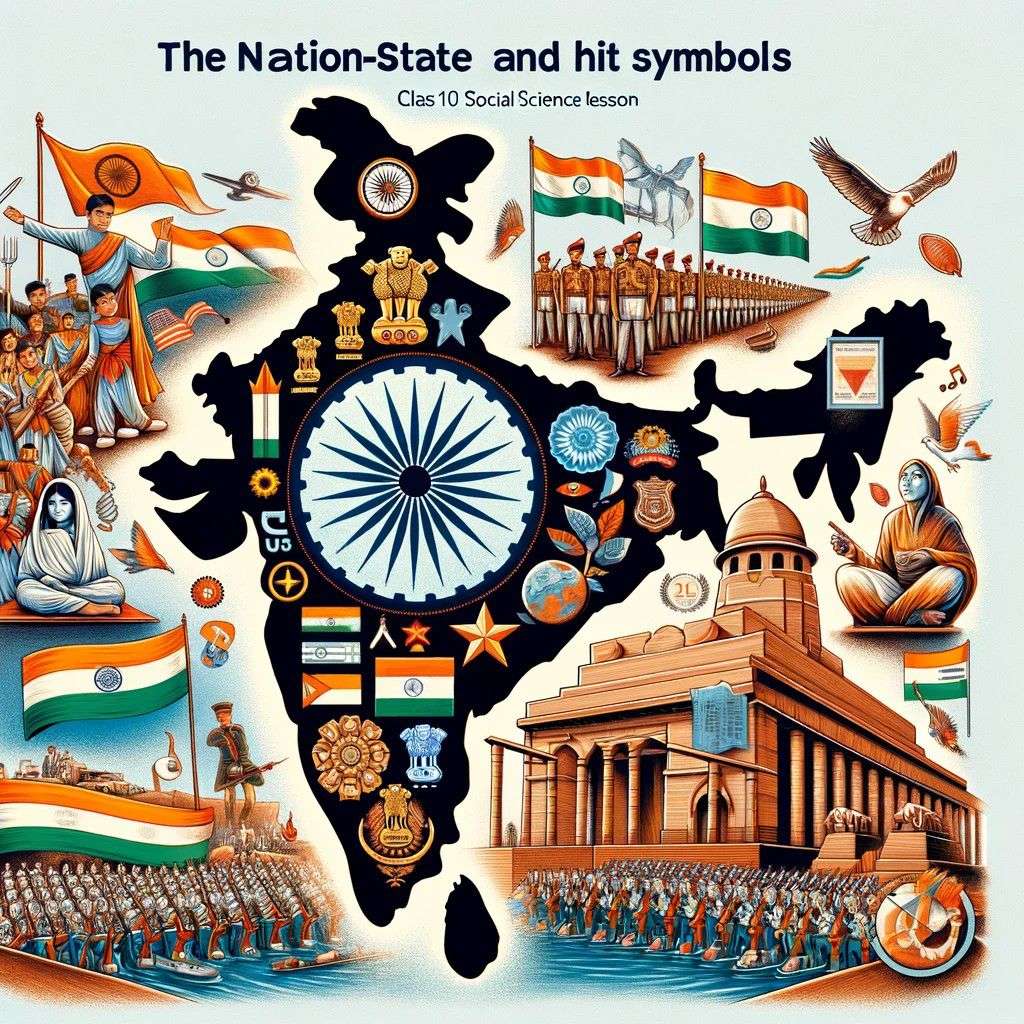
“The Nation-State and its Symbols” is a crucial topic in understanding the development and expression of nationalism in Europe. Here’s an explanation of the key concepts:
- Concept of the Nation-State:
- A nation-state is a political entity characterized by a clearly defined territory with a sovereign government and a population that shares a common sense of identity, typically based on shared culture, history, and language.
- The concept emerged in Europe in the 19th century as a result of nationalism, where people began to identify themselves as part of a distinct nation with a collective identity, distinct from other groups.
- Unlike the dynastic realms and multi-ethnic empires prevalent in Europe before the rise of nationalism, a nation-state was based on the principle that the state and the nation should be congruent. The state was not just a political entity but also an expression of the nation’s identity.
- The idea of a nation-state implies that the government represents the will of the nation, and its primary loyalty is to the nation’s people, not to a dynasty, a religious group, or other factions.
- Symbols of Nationalism: Flags, Anthems, and National Epics:
- Flags: The flag became a powerful symbol of national identity. Each nation-state developed its own flag, often incorporating colors and symbols that had historical or cultural significance. The flag served as a unifying symbol that people could rally around, especially during times of conflict or celebration.
- Anthems: National anthems were composed to express the ideals, history, and aspirations of a nation. They played a vital role in fostering national unity, often played during national ceremonies and events. Like flags, anthems evoked emotional responses and a sense of belonging among the citizens.
- National Epics: Many nation-states revived or created national epics, which are long narrative poems or stories that celebrate the history, legends, and heroes of the nation. These epics were instrumental in building a shared narrative of the past, often glorifying the nation’s historical victories and struggles. They helped inculcate a sense of pride and common heritage among the people.
In summary, the nation-state as a concept represents a significant shift in how political and cultural identities were organized. The symbols of nationalism – flags, anthems, and national epics – not only expressed the unique identity of each nation but also played a crucial role in unifying and mobilizing the population. These symbols helped instill a sense of national consciousness and pride among the citizens, which was essential for the nation-state’s legitimacy and persistence.
The Unification of Italy
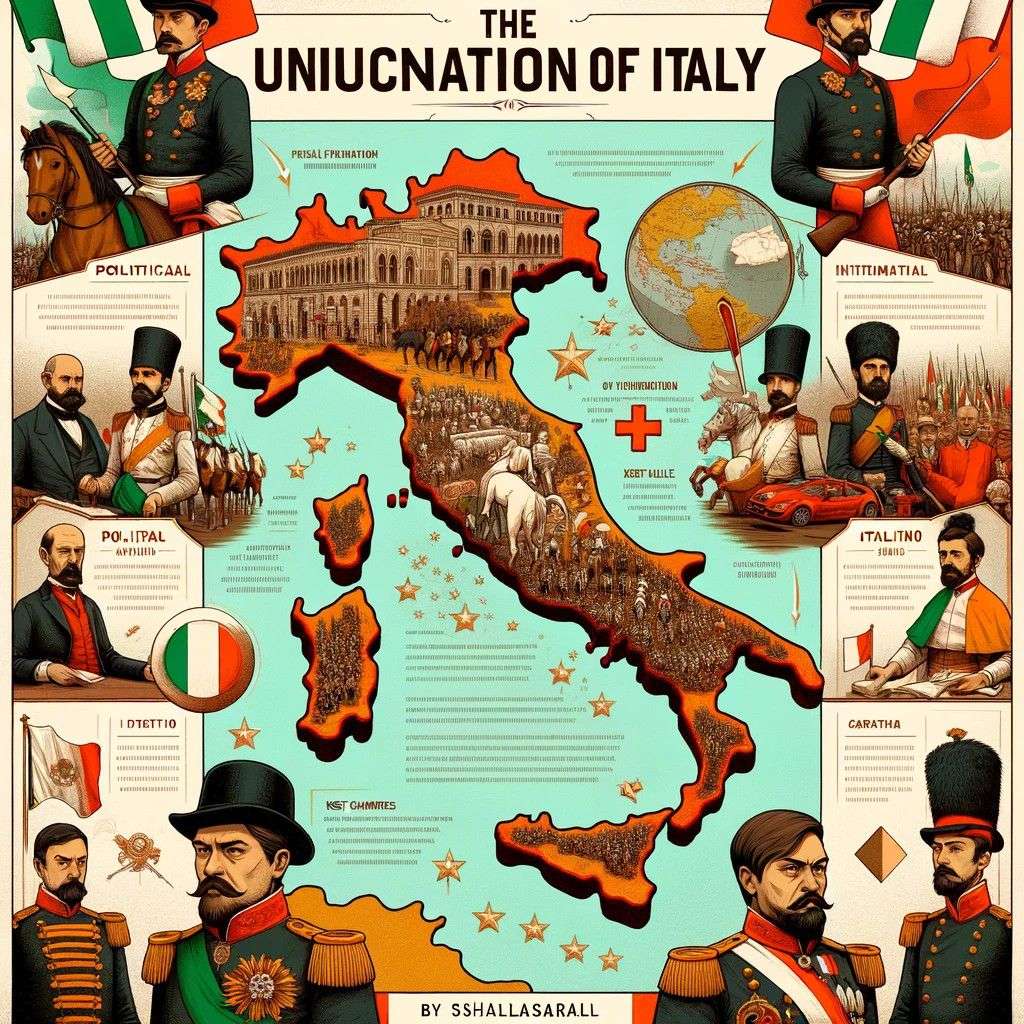
“The Unification of Italy” is a crucial chapter in European history, particularly in the context of 19th-century nationalism. Here’s an in-depth explanation of this topic:
- Political Fragmentation and the Struggle for Unification:
- Before unification, Italy was politically fragmented and divided among different rulers and foreign powers. The north was under Austrian Habsburgs, the center was ruled by the Papal States, and the south was under the Bourbon kings of Spain.
- This fragmentation was a source of discontent for many Italians, who shared a common language and cultural history. The Congress of Vienna in 1815 had further stifled nationalist aspirations by disregarding the concept of a unified Italy.
- The desire for unification, known as the Risorgimento (Resurgence), was driven by the discontent with foreign rule and the oppressive regimes, as well as the aspiration for a single Italian nation.
- Key Personalities: Mazzini, Garibaldi, Cavour:
- Giuseppe Mazzini: An Italian activist and philosopher who founded the Young Italy movement in 1831. He was a proponent of a united, republican Italy and believed in the idea of nationhood based on a shared culture and heritage.
- Giuseppe Garibaldi: A military leader and nationalist. He is most famous for his expedition of the Thousand in 1860, which significantly contributed to the unification of Italy. Garibaldi’s charisma and military prowess made him a popular figure in the unification movement.
- Count Camillo di Cavour: The Prime Minister of the Kingdom of Sardinia, a key figure in the unification process. Cavour was a skilled diplomat and politician who sought to unify Italy under the monarchy of Victor Emmanuel II. He used a combination of diplomacy, alliances, and strategic wars to achieve his goals.
- The Process and Impact of Unification:
- The unification process involved both diplomatic maneuvers and military campaigns. Cavour successfully negotiated with Napoleon III of France to remove Austrian influence from Northern Italy. This led to a series of wars and eventual victories against Austria.
- In the south, Garibaldi’s campaign played a crucial role. His successful invasion and liberation of Sicily and Naples led to the annexation of these territories to the Kingdom of Sardinia.
- In 1861, Victor Emmanuel II was declared the King of Italy, symbolizing the official unification of Italy, although Rome and Venetia were added later in 1870 and 1866, respectively.
- The unification of Italy had significant impacts: it ended centuries of foreign rule and fragmentation, brought about economic and political restructuring, and fostered a sense of national identity. However, it also led to challenges like regional disparities, economic imbalances, and issues in integrating various states with diverse traditions and governance structures.
The unification of Italy is a landmark event in the history of nationalism, demonstrating the power of shared cultural identity and the desire for self-governance in shaping the modern nation-state.
The Unification of Germany
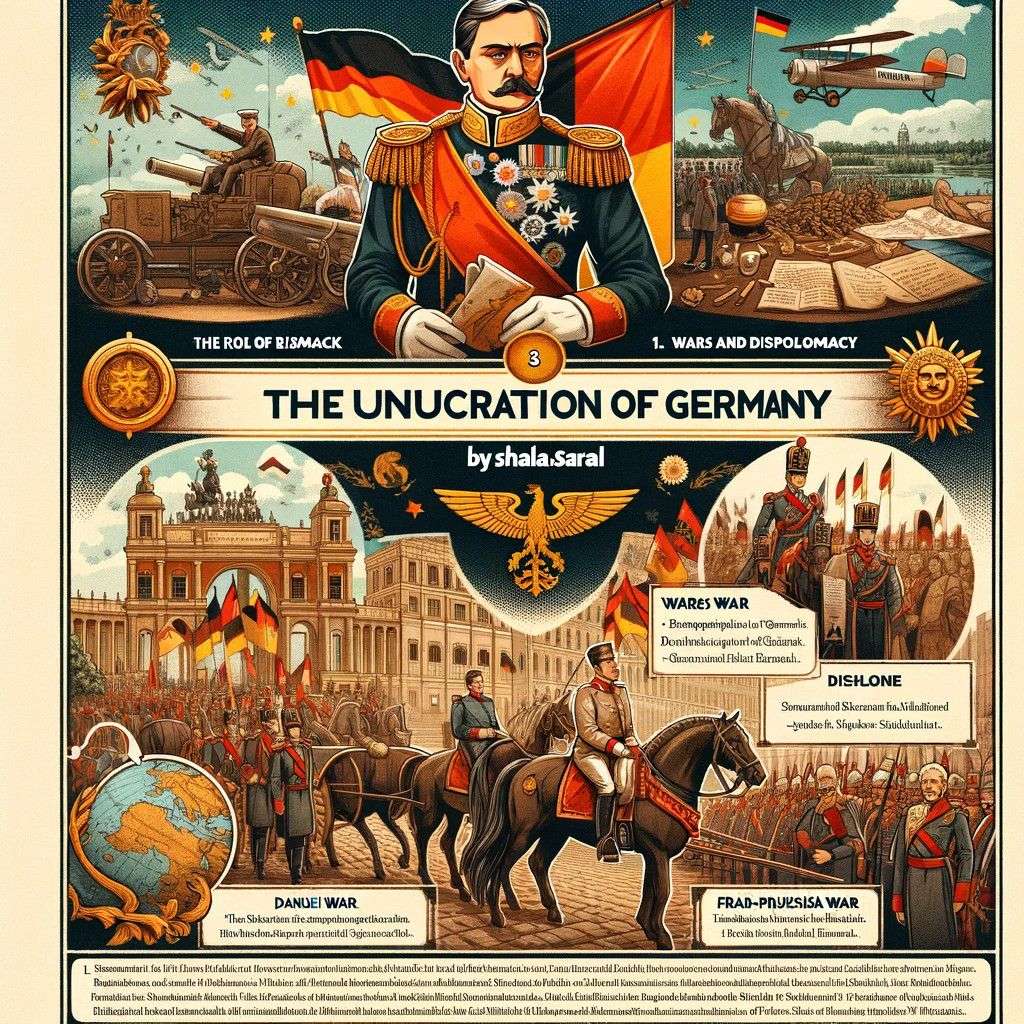
“The Unification of Germany” is a significant event in European history, marking the formation of a German nation-state from a collection of independent states. Let’s delve into the key aspects of this historical process:
- The Role of Bismarck and the Prussian State:
- Otto von Bismarck, the Chancellor of Prussia, played a pivotal role in the unification of Germany. He is often seen as a master of ‘Realpolitik’, a pragmatic approach to politics focused on practical objectives rather than moral or ideological considerations.
- Bismarck’s strategy involved strengthening Prussia’s military and economy and diplomatically isolating potential adversaries. His goal was to unify the German states under Prussian leadership, excluding Austria, which was another dominant German-speaking state.
- He reformed the Prussian army and administration, making Prussia the most powerful and influential of the German states.
- Wars and Diplomacy in Unification:
- The unification of Germany was achieved through a series of wars orchestrated by Bismarck, each designed to increase Prussian influence and pave the way for unification.
- The Danish War (1864): Prussia and Austria jointly waged war against Denmark to gain control of Schleswig and Holstein. This war helped to elevate Prussia’s status among the German states.
- The Austro-Prussian War (1866): Known as the Seven Weeks’ War, this conflict was a decisive moment in German unification. Prussia defeated Austria and effectively expelled it from German affairs. This war led to the formation of the North German Confederation, a union of German states led by Prussia.
- The Franco-Prussian War (1870-1871): This war against France further united the German states. The victory against a common enemy, France, fostered a sense of national unity among the German states.
- The Proclamation of the German Empire:
- The culmination of Bismarck’s efforts and the unification process was the proclamation of the German Empire in 1871.
- After the victory in the Franco-Prussian War, the German princes gathered at the Palace of Versailles to proclaim the Prussian king, Wilhelm I, as the Emperor (Kaiser) of the German Empire. This act symbolized the unification of the German states under Prussian hegemony.
- The new empire was a federal state, with each of the German princes (including the kings of Bavaria, Württemberg, and Saxony) retaining some of their sovereign powers, but with the Prussian king as the Emperor holding significant influence over national affairs.
- The unification of Germany significantly altered the balance of power in Europe. It marked the emergence of Germany as a major European power, influencing political, economic, and military dynamics on the continent.
In summary, the unification of Germany was a complex process involving strategic wars, diplomatic maneuvers, and the strong leadership of Otto von Bismarck. It transformed the fragmented landscape of German states into a powerful nation-state, with lasting impacts on European and global history.
Nationalism and Imperialism
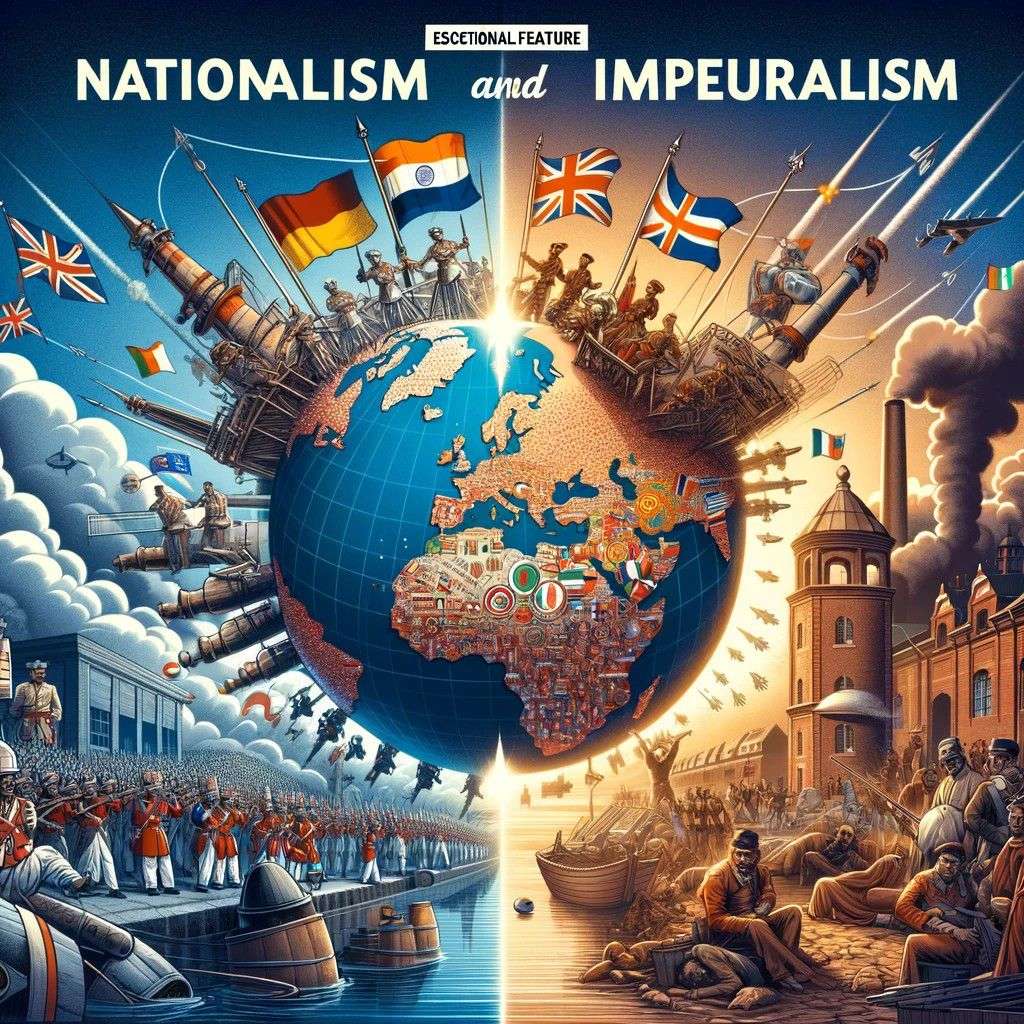
“Nationalism and Imperialism” is a complex and critical topic in modern history, exploring the interplay between nationalistic aspirations and imperial ambitions. Here’s an in-depth explanation:
- Relationship between Nationalism and Imperialism:
- Nationalism, at its core, is the belief that a group of people with common cultural, linguistic, and historical traits should be self-governing. It’s about developing a national identity and often involves the pursuit of sovereignty and independence.
- Imperialism, on the other hand, is the practice of extending a state’s influence over other territories through colonization, military force, or other means. It often involves the subjugation and exploitation of other peoples and lands for economic and political gain.
- While nationalism initially arose as a force against imperial rule and for self-determination, as European nations unified and strengthened, nationalism began to drive these nations towards imperial expansion.
- In the late 19th and early 20th centuries, European powers, fueled by a sense of national superiority and the desire for global dominance, embarked on aggressive imperialist policies, leading to the colonization of large parts of Africa, Asia, and the Americas.
- This period, often referred to as the “New Imperialism,” saw nationalism and imperialism become intertwined. Nationalistic fervor was used to justify imperial conquests, as ruling nations believed it was their national duty to civilize “lesser” peoples and territories.
- The Impact on Colonies and the Rest of the World :
- Cultural and Racial Hierarchies: Imperialism often involved establishing hierarchies based on race and culture, with the imperial powers viewing themselves as superior. This led to widespread racial discrimination and cultural suppression in the colonies. Indigenous cultures, languages, and traditions were often devalued or directly suppressed in favor of the colonizers’ culture.
- Economic Exploitation: The economies of the colonized regions were restructured to serve the interests of the imperial powers. This involved the exploitation of natural resources and labor, leading to economic dependency and underdevelopment in these regions.
- Political and Social Impact: Colonial rule often dismantled existing social and political structures in the colonized territories, replacing them with new systems that served the interests of the imperial powers. This led to long-term political instability and social disruption in many regions.
- Resistance and Anti-Colonial Movements: The oppressive nature of colonial rule eventually sparked resistance movements. Nationalism, ironically, became a driving force in these movements, as colonized peoples began to assert their right to self-determination and independence, drawing upon the very concepts that had initially motivated their colonizers.
- Global Repercussions: The era of imperialism had lasting global impacts. It led to significant migrations, the spread of technologies and ideas, and the establishment of political boundaries that continue to influence global politics today. The end of imperialism and the subsequent decolonization process reshaped the world map, leading to the formation of new nation-states in the post-World War II era.
In conclusion, the relationship between nationalism and imperialism in the 19th and 20th centuries was complex and multifaceted. While nationalism initially emerged as a force for self-determination and unity, it was also used to justify imperial expansion. The imperial era left a lasting legacy on the world, shaping contemporary international relations, economic systems, and national identities. The struggle against imperialism also saw the rise of new forms of nationalism in the colonized world, ultimately leading to the widespread decolonization of the mid-20th century.
Nationalism in Europe – A Retrospect
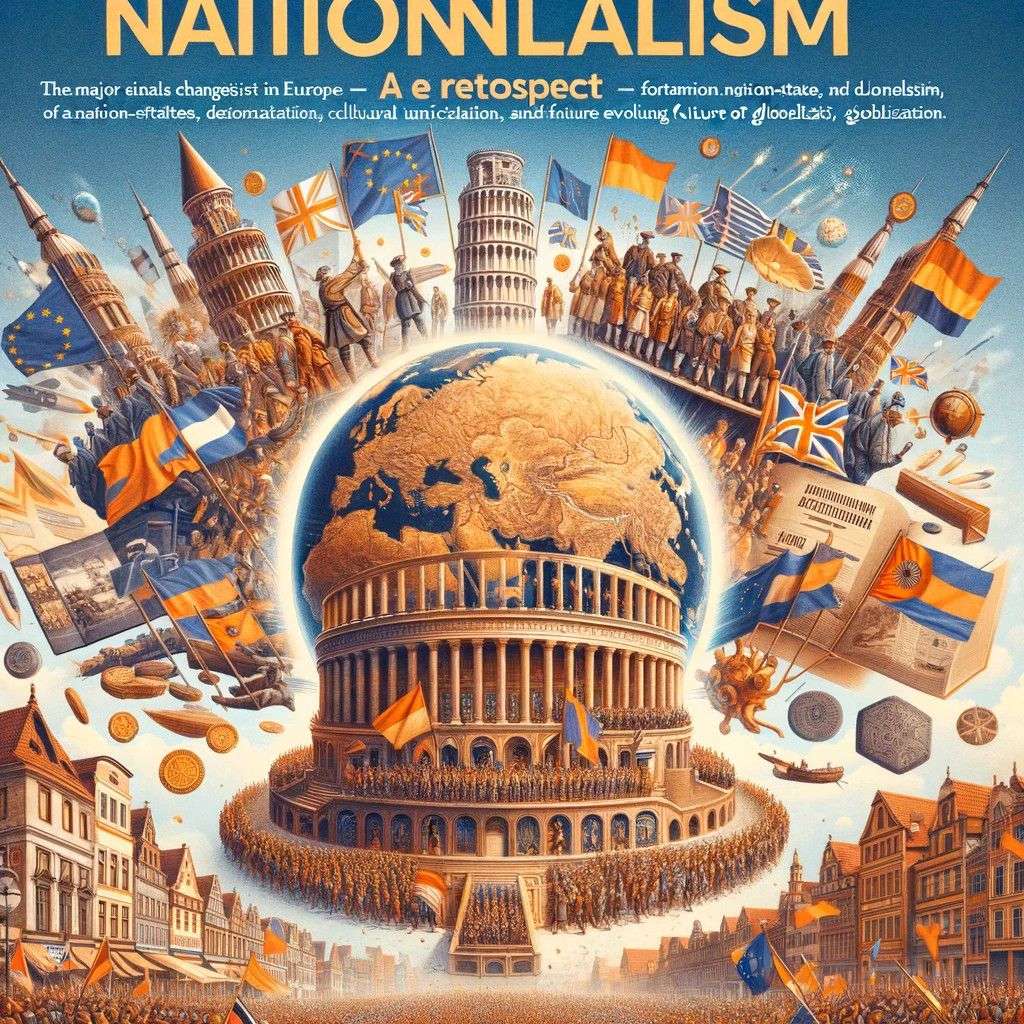
“Nationalism in Europe – A Retrospect” offers a comprehensive look at the profound impact nationalism has had on the continent, its legacy, and its implications for the future. Here’s an in-depth explanation:
- Overview of the Changes Brought by Nationalism:
- Formation of Nation-States: One of the most significant outcomes of nationalism was the formation of modern nation-states. Countries like Germany and Italy were unified, while others like Greece and Belgium gained independence, redrawing the political map of Europe.
- Cultural Unification: Nationalism also led to cultural unification within these nation-states, as languages were standardized, and national histories and cultures were promoted to foster a sense of national identity.
- Democratization: Nationalism often went hand in hand with demands for more democratic governance. The rise of national consciousness contributed to the decline of absolute monarchies and the emergence of more representative forms of government.
- Social Changes: Nationalism influenced various social aspects, including education, where the national language and history became central to curricula, and it played a role in the industrialization process by promoting national economic interests.
- The Legacy and Future of Nationalism:
- Legacy of Nationalism:
- Nationalism has left a mixed legacy. On the one hand, it contributed to the liberation of peoples from oppressive rule and the formation of democratic nations. On the other hand, extreme nationalism led to chauvinism, ethnic conflicts, and two World Wars.
- The concept of the nation-state, as shaped by nationalism, remains the fundamental unit of political organization in the world.
- Future of Nationalism:
- In the contemporary world, the concept of nationalism continues to evolve. While the traditional notion of nationalism based on ethnic or cultural homogeneity is challenged by global migration and multiculturalism, new forms of civic nationalism are emerging.
- The rise of globalization and supranational entities like the European Union poses new questions for nationalism. The tension between national sovereignty and global interconnectedness is a defining issue of our time.
- In some regions, there is a resurgence of nationalism, sometimes in reaction to economic or cultural globalization, leading to debates about identity, immigration, and sovereignty.
- The future of nationalism will likely involve a balance between preserving cultural and national identity and adapting to an increasingly interconnected world where ideas, people, and goods move across borders more freely.
In summary, nationalism in Europe dramatically reshaped the continent’s political, cultural, and social landscapes. Its legacy is complex and multifaceted, reflecting both its role in building modern nations and its contribution to conflicts. As the world becomes more interconnected, the future of nationalism will be marked by its ability to adapt to new realities while continuing to shape the way people and nations perceive their place in the world.